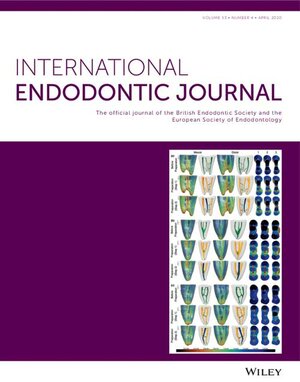Influence of different endodontic treatment protocols on tooth survival: A retrospective cohort study with multistate analysis and group balancing
Abstract
Aim
This study aimed to assess how three different treatment protocols affect the survival of teeth and the survival of teeth without further interventions after root canal treatment (RCT), while also considering additional factors that could potentially influence the treatment outcome.
Methodology
Data were collected from an outpatient clinic database from July 1999 to January 2024 and 14 233 treated teeth could be included in a retrospective cohort study. Treatment protocols incorporated hand files (Protocol 1), multiple-file rotary NiTi systems added with passive ultrasonic irrigation (PUI), citric acid and occasionally chlorhexidine (Protocol 2) and reciprocating instruments added with PUI, EDTA, warm vertical compaction and calcium silicate-based sealer (Protocol 3). Survival analysis coupled with Cox proportional hazard regression and Kaplan–Meier curves took into account several variables including treatment, patient demographics and experience of the treatment provider. Confounding was addressed by entropy balancing and gradient boosted logistic regression. Multistate analysis was conducted to evaluate the influence of treatment protocols on the transition between various intervention states.
Results
Survival analysis revealed that Protocol 3 significantly enhanced survival rates and survival rates without further interventions by 30%–40% compared to both other protocols. Additionally, higher patient age was identified as a negative predictor of treatment outcomes. Supportive periodontal treatments were a positive predictor. Factors such as tooth type, vitality, number of visits, experienced treatment provider, calcium silicate-based sealer and patient gender did not significantly affect outcomes in the adjusted models. Multistate analysis confirmed that Protocol 3 was associated with significantly reduced incidences of retreatment and extraction.
Conclusion
Protocol 3 significantly enhanced survival and survival without further interventions compared to both other protocols. Patient age and supportive periodontal treatments were significant predictors of outcomes throughout all calculated models.


 求助内容:
求助内容: 应助结果提醒方式:
应助结果提醒方式:


